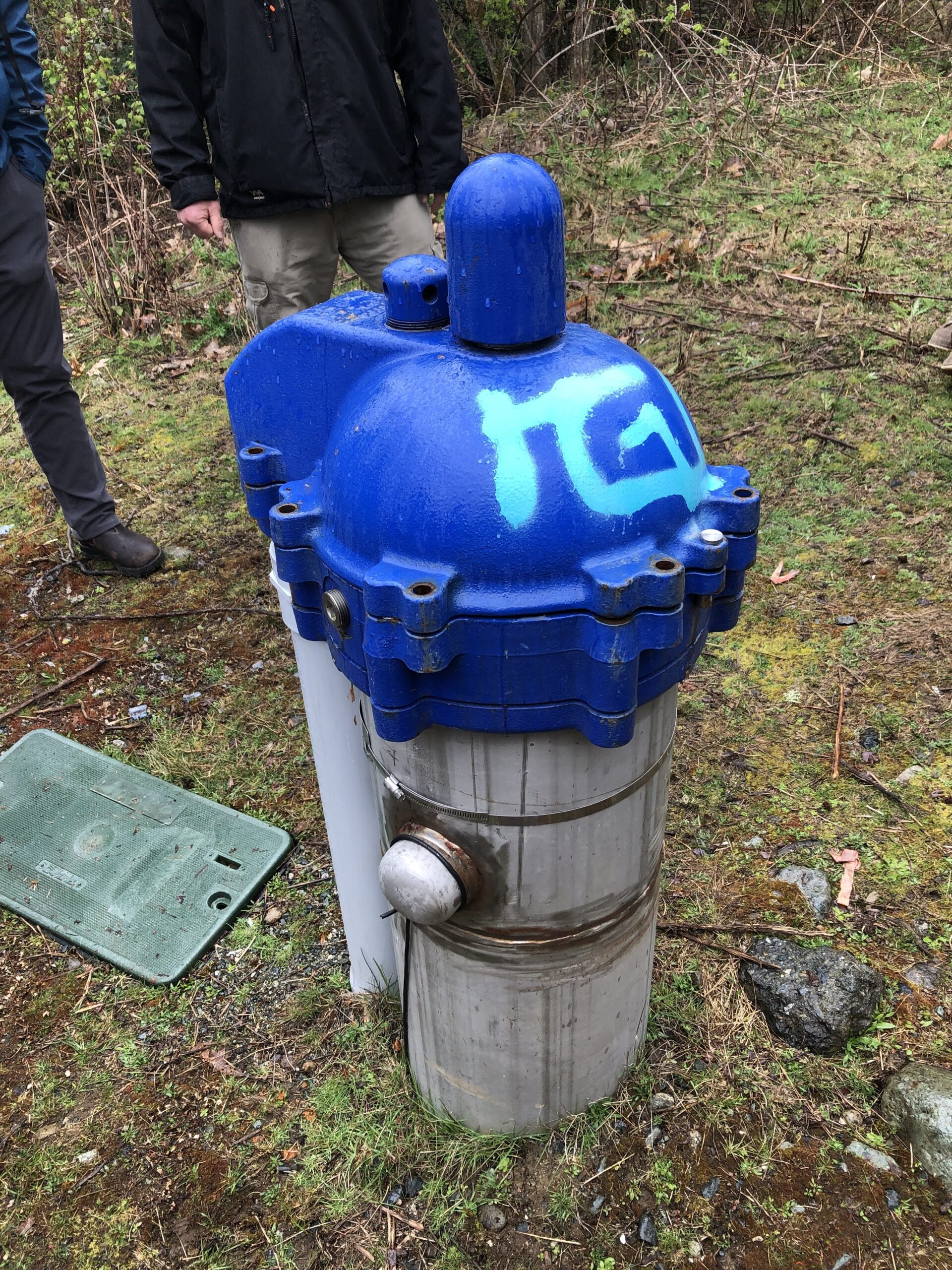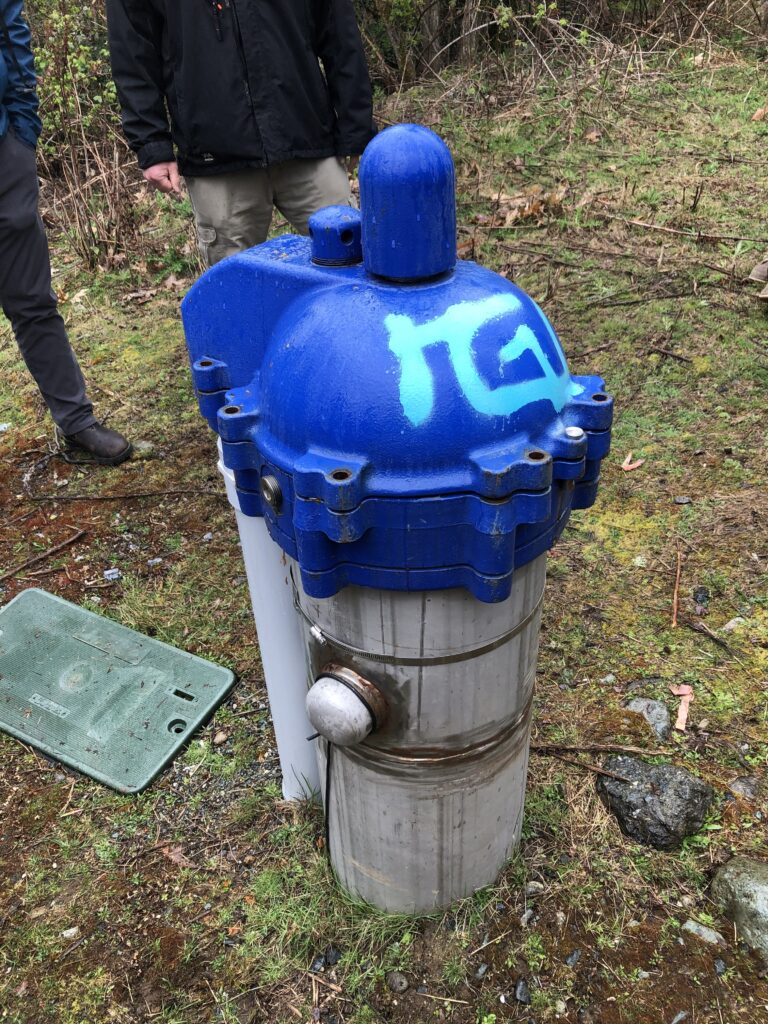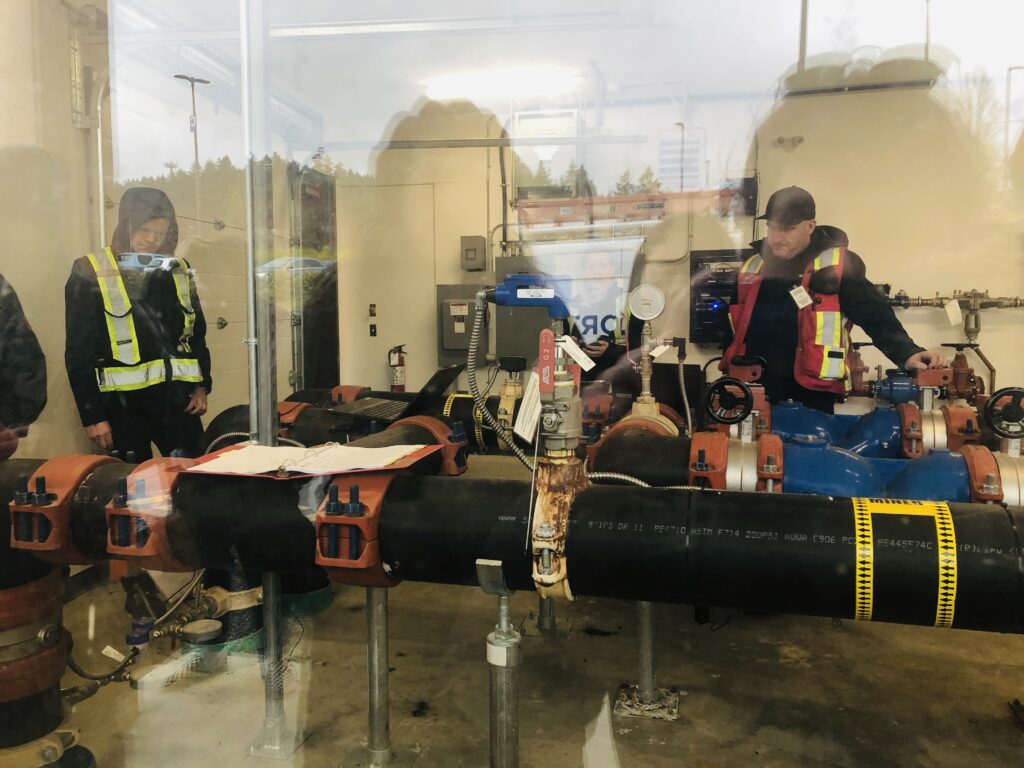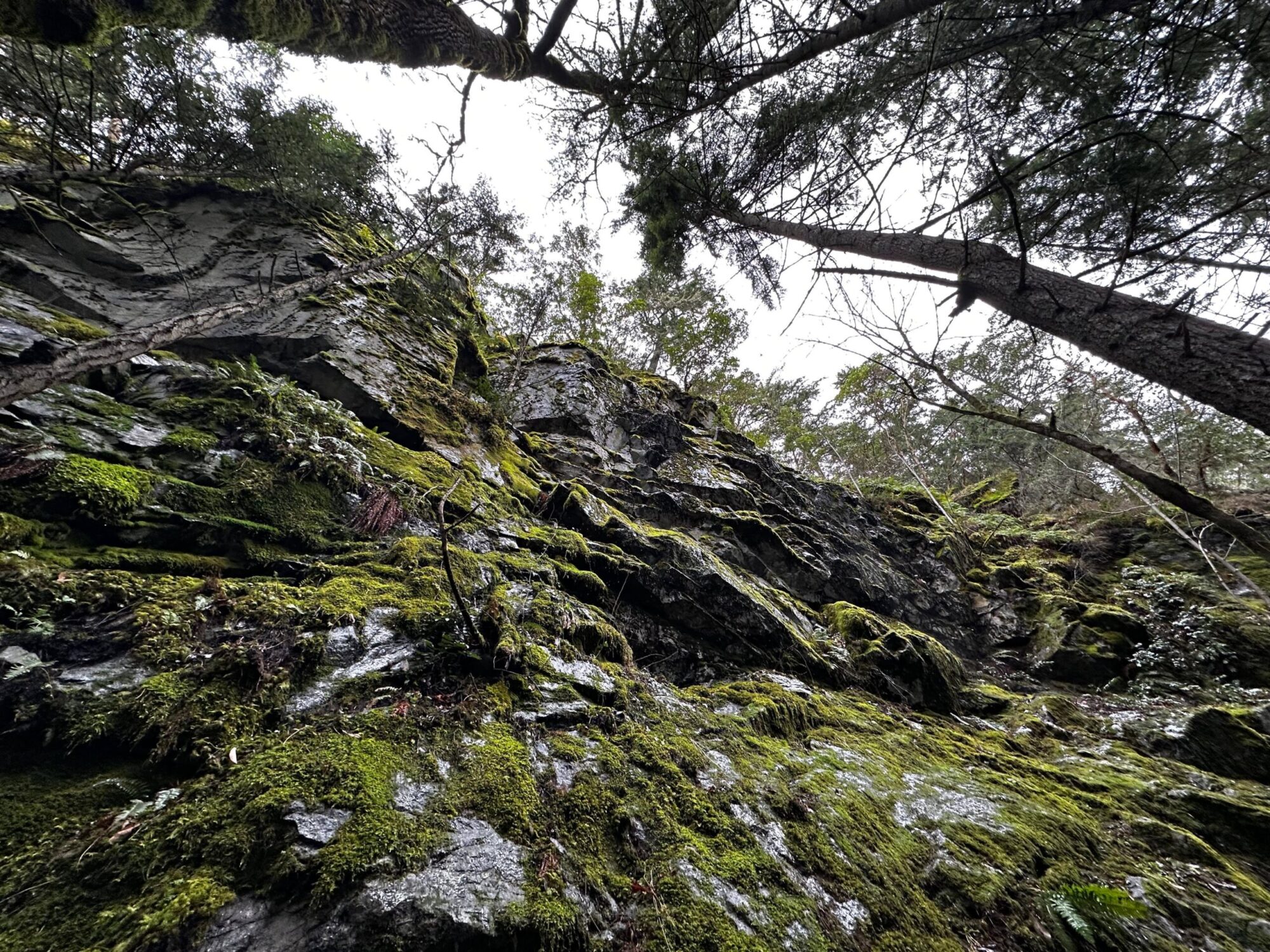
Seventh Field Trip
April 8th, 2024
Introduction
On April 8th, 2024 students from the Environmental Geology class at Vancouver Island University took a tour of the GeoExchange directly on Vancouver Island University Campus (Vancouver Island, Nanaimo, B.C.), under the supervision of Professor Tim Stokes. During the visit, the daily temperature was 8 ℃ and the sky was cloudy. The goal of the field trip was to better understand the geothermal energy system named the GeoExchange at Vancouver Island University. Climate change brought up by anthropogenic emissions of greenhouse gases increases the average global temperature on Earth by 1.1 ℃ since 1880, according to the Goddard Institute for Space Studies (GISTEMP Team, 2024). Switching to clean sources of energy, such as wind and solar, is not only a way to reduce anthropogenic emissions of greenhouse gases, but also a way to reduce air pollution and improve our health. Prior to the visit Professor Stokes gave a short overview of the GeoExchange system to the class. During the visit field notes with observations about characteristics of the GeoExchange were collected.
Background

Figure 1. Geoexchange energy system map (Vancouver Island University, Nanaimo, B.C).
The first borehole (exploratory borehole) was drilled in 2010 (IW‐2) to a depth of 164 m, and a delivery rate of 31 l/sec was produced. Pump testing of this 2010 borehole noted a change of the water level of an observation level near NDS track, confirming that an open underground flow link existed in the abandoned mine workings. Water samples taken from the well indicated that this water was of poor quality and potentially corrosive (high TDS, high in metals and ions, high in bacterias and highly alkaline).
The Geoexchange energy system at Vancouver Island University is located at the Geo-Exchange Building (HSC1 on the map in Figure 1), and relies on water trapped underground in the abandoned Wakesiah mine, it supplies heat to the University’s buildings in coolest months and air conditioning in warmest months.
The GeoExchange energy system was completed in 2018 and relies on mine water at average year‐round temperature from the abandoned Wakesiah Colliery coal mine. This mine water is below most campus at depths of 134‐190 m and the system uses a mine water loop to extract water from one hole (PW‐1). Then the water is put through a heat exchange system in a pump house, where the cooled water is returned into an injection borehole (IW‐1 or 1W‐2). A second ambient water loop takes warm water from heat exchange system at the pump house and transport it to Health & Science buildings where it is used to heat or cool them, after which it is returned to the pump house.
Energy needs for the Health & Science buildings are 95kWh/m2 for heating and 57kWh/m2
for cooling. The GeoExchange system reduce energy needs for the Health & Science buildings by 75%. For every unit of electrical energy used to run system it produces
approximately four equivalent units of heat. Estimated energy saving of $66,000 per year compared to equivalent use of gas for heating, is produced with the GeoExchange system.

Figure 2. Water well producing the north mine water at Vancouver Island University (Nanaimo, B.C.).
Notes and Observations
The geo-exchange relies on groundwater trapped in the old Wakesiah coal mine transported all the way from a well located on the north side of the campus (see Figure 2) to the heat exchanger in the Geo-Exchanged building. The system uses its ambient temperature loop to store heat from buildings into cooler groundwater (in the summer), and extracts the heat the warmer groundwater (in the winter) to warm the Health & Science buildings. At full capacity the system can extract water at an average rate of 15L/s and during the tour (on April 8th, 2024), Falcon Engineering engineers were testing the GeoExchange system at full capacity (see Figure 3).

Figure 3. Engineers working hard and testing the GeoExchange system at its full capacity.
Conclusion and Recommendations
The GeoExchange system at Vancouver Island University is dependant on the void spaces left by coal mining underneath the University, and in this regard geoscientists were essential in ensuring the safety and feasibility of such project. Geoscientists helped engineers by providing key geological information about the geological subsurface, allowing for the adequate design and installation of this geothermal system that relies on old mine waters, for both storage and extraction of heat.
References
GISTEMP Team. ( 2024). GISS Surface Temperature Analysis (GISTEMP), version 4: NASA Goddard Institute for Space Studies. Retrieved from https://data.giss.nasa.gov/gistemp/.
